- April 18, 2024
Can Cats & Rabbits Live Together? Vet-Reviewed Safety Guide
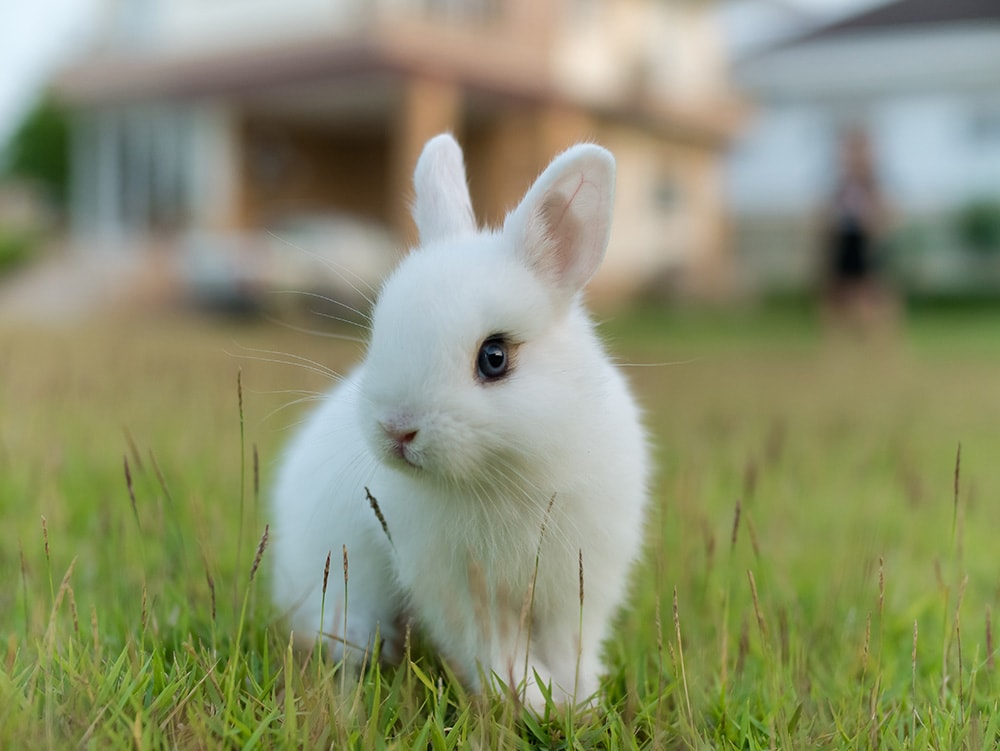
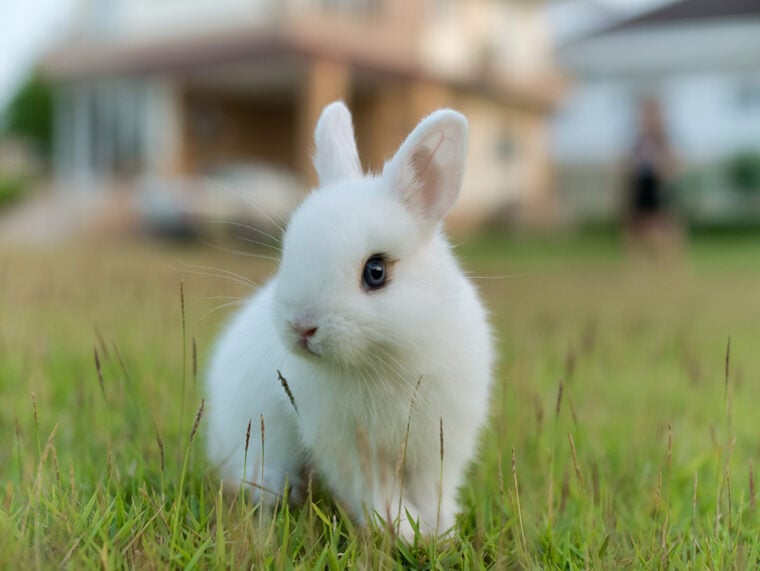

The information is current and up-to-date in accordance with the latest veterinarian research.
If you already have a cat or a bunny and want to diversify your companionship, you may wonder if cats and rabbits can live together. Cats are skilled predators, and rabbits are not just prey animals; they’re commonly caught and eaten by feral cats.
Some pairs of cats and rabbits get along incredibly well, but this is actually quite rare. It’s usually when the pair was introduced at a very young age and had learned to live with each other. Even this is not a guarantee and the animals may injure each other after years of harmonious living.
It’s more common that the cat may attempt to chase and hurt the rabbit, and these two species should never be left unsupervised. In most cases they should be kept away from each other, as the presence of a cat will cause the rabbit a lot of stress, while the cat’s natural hunting instinct is likely to switch on. When interactions between the animals don’t go so smoothly, the resulting conflict can be stressful and harmful for both parties, and can lead to serious injuries of both animals, with the rabbit unfortunately being at greater risk of life threatening ones.

Why Do Some Cats Chase Rabbits?
Many cats have high prey drives, which can be easily triggered by rabbits hopping around or running about. Cats haven’t been domesticated for that long, so their instincts are still quite strong, but not all cats are equally motivated to go after moving critters.
Mellow, relaxed pets may do just fine around bunnies, but if your cat regularly gives squirrels, mice, and other small animals a run for their money, there’s a chance your feline may behave similarly around a house rabbit. Even the quietest of cats are predators at heart, and they should not be underestimated or judged, as hunting is a normal part of their behavior and they are not meant to be friends with rabbits. This is more of a rare occurrence than a common or easily achieved possibility.
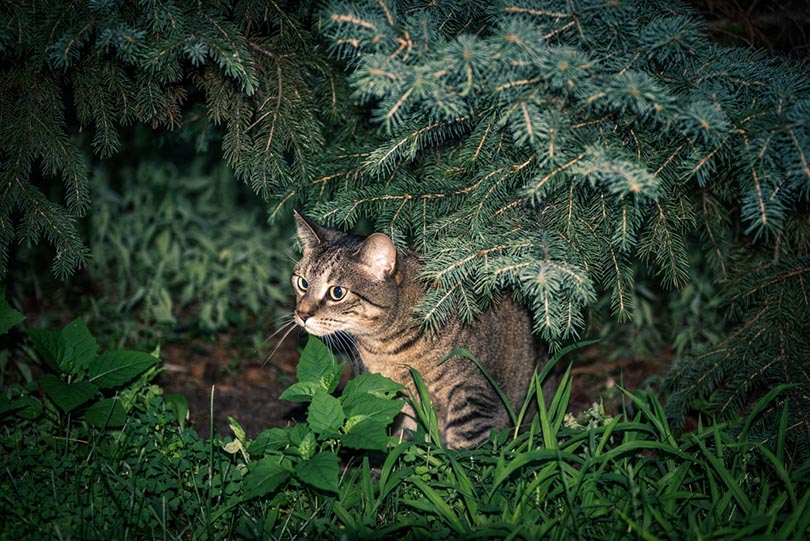
Do Rabbits Ever Chase Cats?
Rabbits can chase cats under certain circumstances, particularly when defending their territory against feline intrusion or trying to establish dominance.
Larger bunnies may be a bit more assertive in their behavior, particularly towards kittens. This may be the only way for some rabbits to establish dominance towards a kitten that may learn to respect the bunny and stay away. But that does not mean they won’t try to chase the rabbit as they grow up.
Although bunny aggression is often limited to chasing cats to move them away from their territory, cats can sometimes become triggered and attempt to catch rabbits. Bunnies are social creatures that take the establishment of territory and dominance quite seriously, which can lead to activities such as chasing.
Can Rabbits Be Dangerous to Cats?
Rabbits have strong back legs, and many have massive paws that can deliver severe blows. They’re capable of injuring cats, particularly ones that are smaller than they are! Rabbits can be territorial, and some defend themselves to fend off intruders. Territorial rabbits can become unhappy and aggressive when their worlds are interfered with by introducing new feline companions. Not to mention, they will be stressed by the mere smell and presence of a predator in the house, particularly in the beginning, even though they may never get a glimpse of them.

Are There Ways to Encourage Rabbits and Cats to Live Together Peacefully?
Spending lots of time on introductions often helps pets become comfortable around each other. Selecting the right time for introductions can go a long way toward allowing the pair to settle in comfortably. Cats are often less inclined to be triggered into unwanted chasing activity when they’ve recently eaten or are relaxed. Kittens and dominant rabbits may find a way to tolerate and respect each other, as the bunny is more likely to assert dominance. But these two species should never be left to interact together, and one or both should always be in a crate or a hutch in each other’s presence.
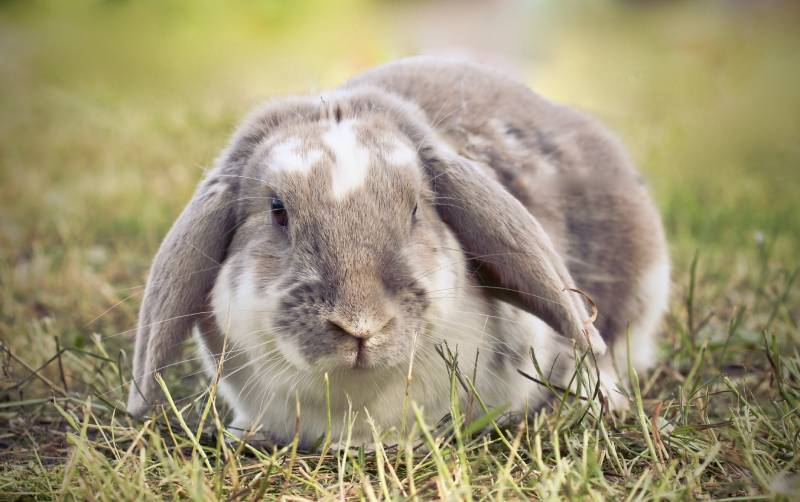
Introductions
Before considering introducing two species, be aware that there is no real need for them to interact at all. They can both live happy, stress-free and safe lives, being minimally aware of each other’s presence, and this will be in their best interest. However, if you still want to try and introduce them, make sure they never come in direct physical contact, as this will risk the bunny getting injured. One or both animals should always remain in a secure crate at all times.
This article is a mere guide and for any further questions, please consult with a veterinarian. Here are a few steps for introducing your rabbit to your cat.
- Start with gentle scent exchange, by placing an item of one of the animals in the room where the other one mostly resides. For rabbits, do not put the cat’s item in their hutch, as this will stress them out. Leave it well away from the hutch, in the room where the hutch is.
- Allow the rabbit to explore outside of the hutch, in a safe manner, not being interrupted by other pets or noise, and they can choose how close they want to get to explore the item. If they are getting stressed, remove the item and do not force further attempts at introductions.
- If the scent exchange goes well, and the rabbit is confident, proceed to the next step. Introduce your pets in a neutral place, such as the living room, to prevent the rabbit getting stressed and fearful by the presence of a predator in an area where they live or where their hutch is. Their hutch should always be a safe place, undisturbed and quiet.
- Keep the cat in a box or crate, so they cannot come close to the rabbit.
- Keep the rabbit in a secure crate for the initial several meetings too. Allow the cat and rabbit to look at each other from a distance.
- If the introduction appears to be moving along calmly, and the rabbit is not getting stressed, while the cat is not showing signs of a hunting instinct kicking in, keep the pets like this for a few minutes at a time. Feed them both their food or offer toys, but do not let them out of their crates.
- After a few days or weeks, try and let the rabbit out of their crate, so they can explore at their own pace. Do not proceed with this step if the cat is hissing or seeming too interested in the bunny, and always keep the cat in a crate or a carrier box.
- It’s important to always keep the cat in the box, as they may try to chase the rabbit, and even if the rabbit is in a crate, they will get severely stressed if a cat is lounging at their crate.
- Put an end to the meeting if either one starts to become frightened or aggressive to ensure the pair starts to create positive associations regarding being around each other.
- Keep things positive and give both pets rewards for good behavior, but never let them interact directly without a crate. This is simply not safe and not worth the risk, and will not become any safer with time.
Cage-Free Interactions
Cage-free introductions should not be attempted, as there is always a risk the animals may injure each other, or the cat may even try to kill the rabbit. Even if you feel the animals are relaxed, and they have been behaving well in the previous steps, the chance of something going wrong is just too high. It’s not worth the risk, as both animals will live a much happier and relaxed life without directly interacting with each other.
While your pets may get along, remember that some cats and rabbits never really manage to reach the point where they truly feel comfortable around each other, and others actively need to be separated from each other.
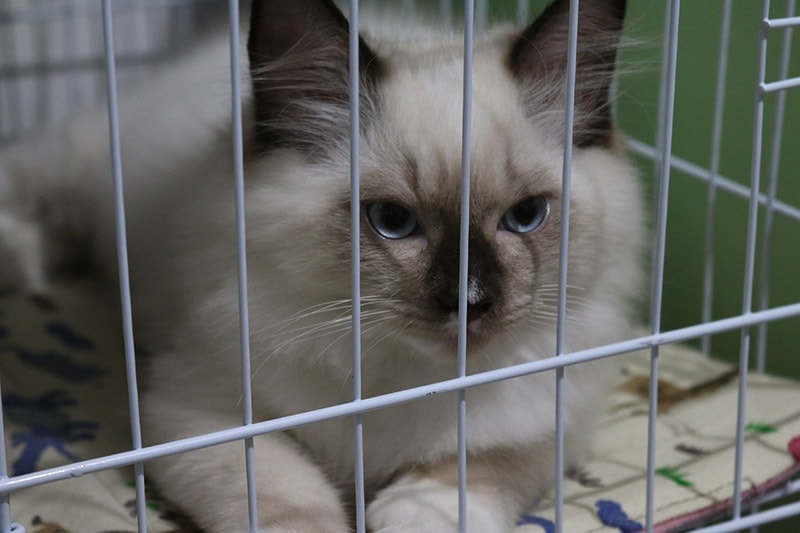
Other Considerations
Adopting a kitten and a rabbit at the same time may increase the likelihood that the two get along reasonably well. However, consult with a veterinarian before you consider this. Size can also make a difference in how cats and rabbits get along. Small cats and kittens and adult rabbits may be more likely to find ways of tolerating each other. Always keep your bunny in a secure enclosure or a separate room instead of allowing them free reign of the home, as this is the only way to keep them entirely safe from the cat, even if you are there to supervise, but make sure to provide your bunny with lots of daily exercise and playtime!

Conclusion
While some cats and rabbits get along under supervised conditions, most pairs must be kept apart to keep everyone safe and happy. Cats are predators that eat rabbits when left to their own devices in the wild. So, having a rabbit and a cat at the same time can be a bit complicated.
It depends on each animal’s personality, but their size and environment can shape how rabbits and cats interact. Larger cats may be tempted to chase and harass rabbits, which can lead to life-threatening injuries. Introducing rabbits and cats slowly with patience and respect for each animal’s limits can help them get accustomed to each other, but always keep them separate without allowing direct physical contact, as the risk of something going wrong is too high to risk it. Both species can live a happy and healthy life without ever interacting with each other and being unaware of each other’s existence, except through scent, and they won’t be missing out on anything.
Featured Image Credit: Preediwat, Shutterstock
Tags
What do you think?
Related Articles

New Puppy Checklist: Gear You’ll Need for Your New Dog
Getting a new puppy is really exciting, but before you welcome them home, it’s important to prepare your space for them. Since puppies need a

How Big Do Mini Poodles Get? Vet Reviewed Average Weight & Growth Chart – Dogster
The information is current and up-to-date in accordance with the latest veterinarian research. Learn more » When you buy a Miniature Poodle, you might not

Can Police Dogs Smell Nicotine? Vet Verified Facts & Info – Dogster
The information is current and up-to-date in accordance with the latest veterinarian research. Learn more » While cigarette sales have been declining steadily for decades,

How Old Is 5 in Dog Years? Vet-Approved Guide to Each Size of Dog – Dogster
The information is current and up-to-date in accordance with the latest veterinarian research. Learn more » A common method for calculating a dog’s age is

